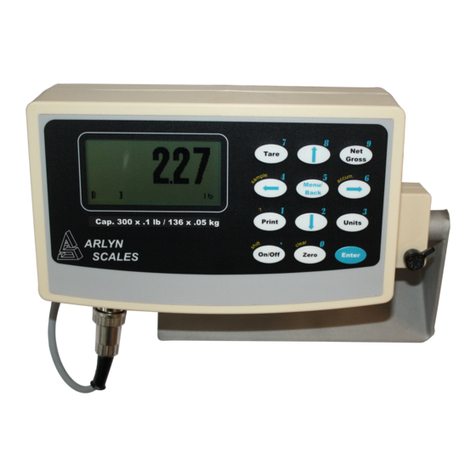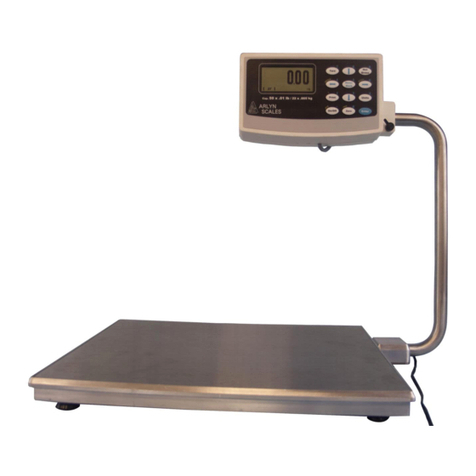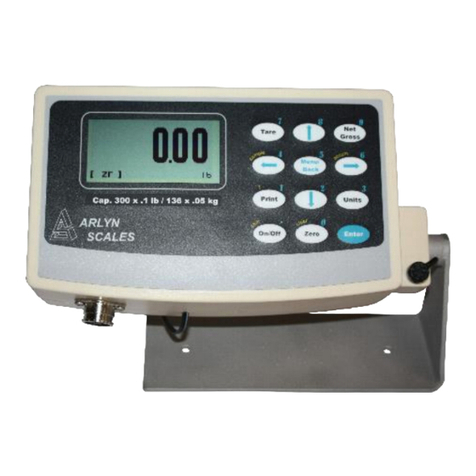
P
LATFORM
S
ETUP
............................................................................................................................................................................................. 18
Important Selections ............................................................................................................................................................................ 19
Other Items .......................................................................................................................................................................................... 19
Parametric Settings ............................................................................................................................................................................. 19
Filtering and Accuracy ......................................................................................................................................................................... 20
Advanced Setup and Diagnostics ......................................................................................................................................................... 23
TROUBLESHOOTING ........................................................................................................................................................................... 24
Scale reads zero and will not move. ..................................................................................................................................................... 24
Scale reading is fluctuating wildly. ...................................................................................................................................................... 24
Scale reading is different on different areas on the platform? ............................................................................................................ 24
Scale corners properly but does not indicate the correct weight. ........................................................................................................ 24
MENU TREE ........................................................................................................................................................................................ 25
INTRODUCTION TO OPTIONS ............................................................................................................................................................. 27
RS422 COMMUNICATION ................................................................................................................................................................... 27
C
ONFIGURING THE
P
ORT
.................................................................................................................................................................................... 27
P
ERFORM
T
EST
P
RINT
........................................................................................................................................................................................ 27
L
OOP
B
ACK
T
EST
.............................................................................................................................................................................................. 27
P
RINT
S
TREAM
M
ODE
....................................................................................................................................................................................... 28
P
RINTING AT
S
TABILITY
U
SING
M
OTION
D
ETECTION AND
S
TABILITY
C
ONTROL
.............................................................................................................. 28
The Print-At-Stability Setup Screen ...................................................................................................................................................... 28
Print Stream Mode with Print-At-Stability ........................................................................................................................................... 29
P
RINT
F
RAME
.................................................................................................................................................................................................. 29
Defining and Editing the Print Frame .................................................................................................................................................. 29
Print Frame Functions .......................................................................................................................................................................... 30
Print Frame Design Examples .............................................................................................................................................................. 30
E
XTERNAL
C
OMMAND
I
NTERFACE
........................................................................................................................................................................ 30
Print Request Response Time ............................................................................................................................................................... 31
External Command Limitations ............................................................................................................................................................ 31
The [*] Command: Used for Keyboard Emulation ............................................................................................................................... 31
T
EST
U
SING
T
ERMINAL
...................................................................................................................................................................................... 31
RS485 COMMUNICATION ................................................................................................................................................................... 33
C
ONFIGURING THE
P
ORT
.................................................................................................................................................................................... 33
P
ERFORM
T
EST
P
RINT
........................................................................................................................................................................................ 33
P
RINT
S
TREAM
M
ODE
....................................................................................................................................................................................... 33
P
RINT AT
S
TABILITY
U
SING
M
OTION
D
ETECTION AND
S
TABILITY
C
ONTROL
................................................................................................................... 33
P
RINT
F
RAME
.................................................................................................................................................................................................. 33
E
XTERNAL
C
OMMAND
I
NTERFACE
........................................................................................................................................................................ 33
SETPOINT CONTROLLER ..................................................................................................................................................................... 34
O
UTPUT
S
PECIFICATIONS AND
N
OTES
................................................................................................................................................................... 34
C
REATING
S
ETPOINTS
F
ORMULAS
........................................................................................................................................................................ 34
The Setpoint Definition Screen ............................................................................................................................................................. 34
Creating and Editing Formulas ............................................................................................................................................................ 35
Notes on Cycle Mode ........................................................................................................................................................................... 36
Output Connector and Pin Diagram .................................................................................................................................................... 37
WEIGHT AVERAGING .......................................................................................................................................................................... 37
P
USH
B
UTTON
O
PERATION
................................................................................................................................................................................. 37
C
ONTINUOUS
O
PERATION
.................................................................................................................................................................................. 37
C
ONFIGURING THE
W
EIGHT
A
VERAGE
O
PTION
....................................................................................................................................................... 37
KEY LOCK PASSWORD PROTECT ......................................................................................................................................................... 37
K
EYPAD
L
OCK
................................................................................................................................................................................................... 38




































